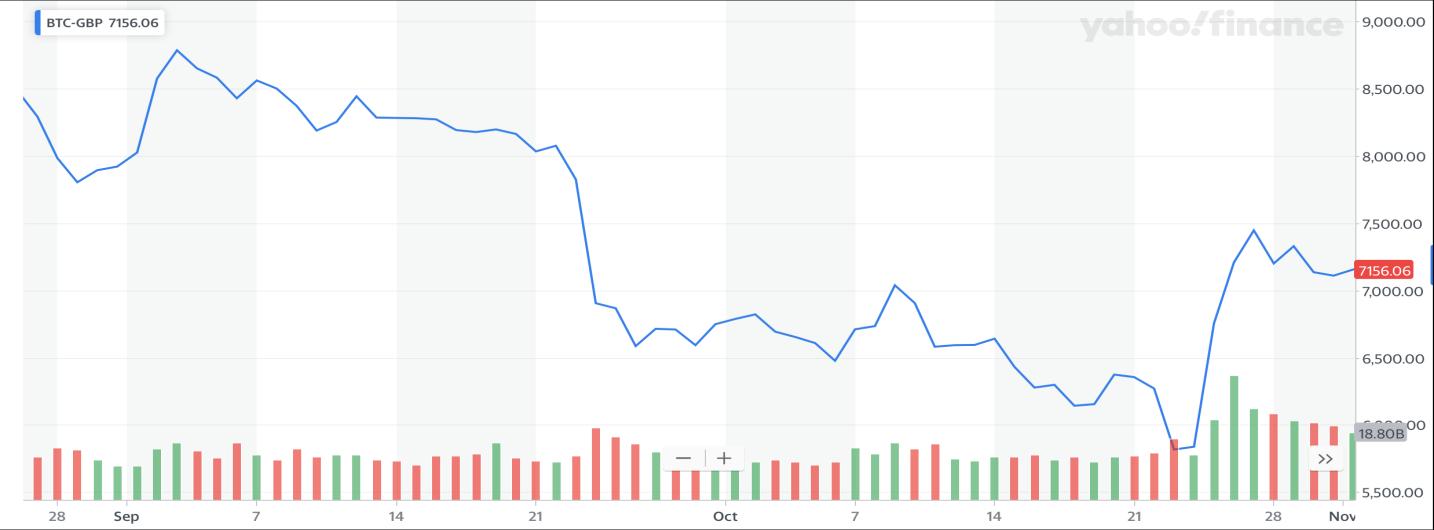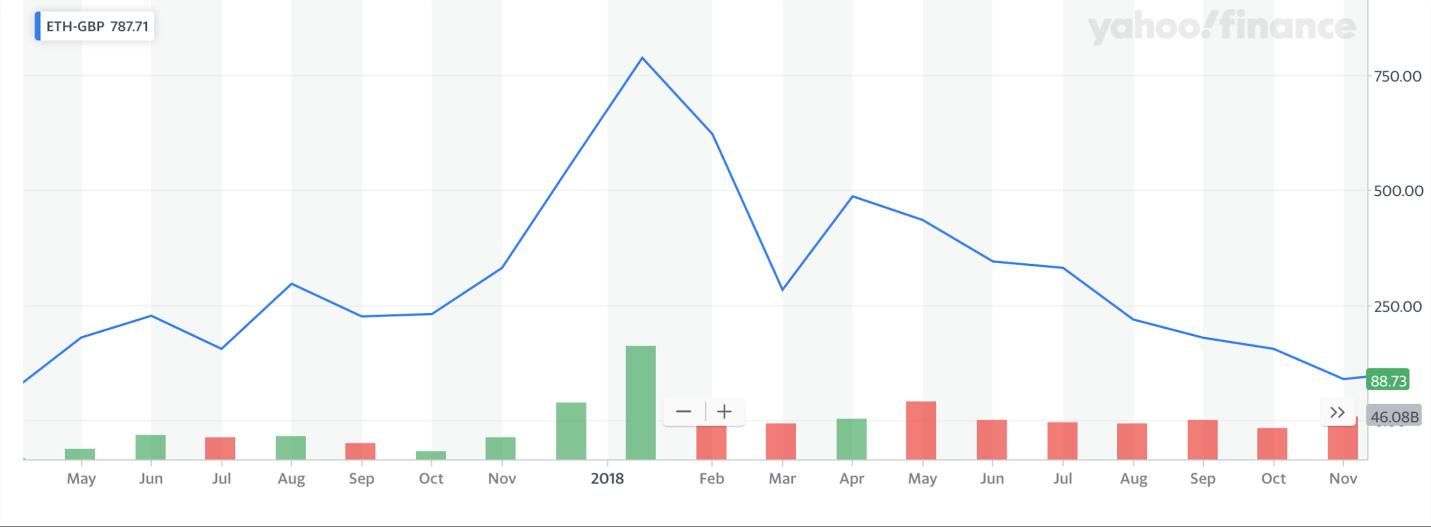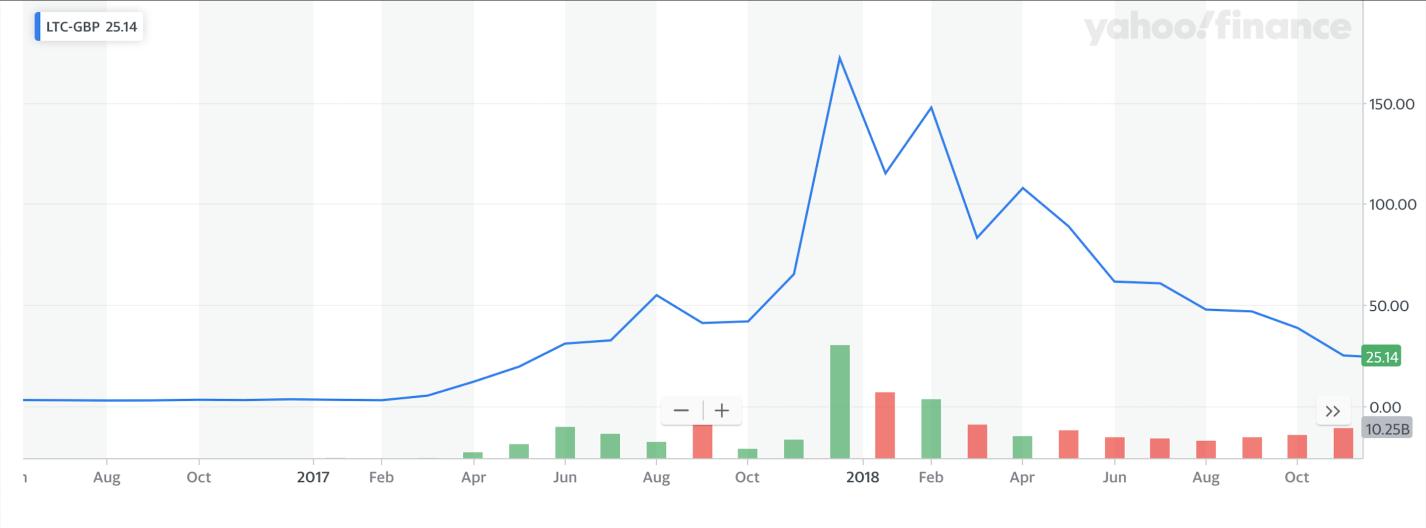
5 minute read
Dead or alive
from Whitonomics 2020
WHITONOMICS ISSUE 8
The state of cryptocurrency after a decade is uncertain
Josh Das since the release of the first crypto- leading to faster transaction speeds. currency – Bitcoin, securing its sta- It can be argued that these tus as the leading digital currency cryptocurrencies had made its dent with market capitalization that is 7 ½ in the economy at the end of 2017 Ethereum. Cryptocurrencies are digi- gest oligopolies of the industry had tal/virtual systems of money that reached their peak value. Most noare decentralized and encrypts its tably, Bitcoin had reached an exsecurity; thus, its infamous emer- change rate of £12861.60 which was gence which was first viewed as a equivalent to 1 BTC (Bitcoin) (Figure peculiar hobby rather than a reliable 1) and Ethereum had an exchange return of investment, was not that rate of £975.32 which was equivasurprising in hindsight. Undermined lent to 1 ETH (Ether) during this periat the start of its development, later od. Currently, the number of converit was found to have impacted the sations about Bitcoin and altcoins international economy massively as seem to pale in comparison comit enables more global transactions, pared to previous years – so where suited to carry out illegal activities (like money laundering or tax evasion), forges new markets and even posed a threat to close banks. Approximately 1.7 billion people do not have bank accounts, so it is easier to use cryptocurrency as a medium of carrying out transactions in their daily lives due to the simple is cryptocurrency now?
Firstly, Bitcoin has taken a major toll in its exchange rate as its peak value in December 2017 was £12861.60 whereas in October 2019 1 BTC (Bitcoin) was valued at £4893.24 – this is approximately a
62% depreciation. In October of 2019 (when this article was written), it was forecasted that in the coming months of November and December the value of BTC would keep depreciating – as low as £2525.77 which is
It has been almost a decade
peer-to-peer settlement system –times greater than its ‘competitor’ and start of 2018 because the big80% in depreciation from its peak value. The “Great Crypto Crash” (also called the “Bitcoin Crash”) in the early months of 2018 was caused by several factors. Factors included mass amounts of BTC being sold at once and a market scare. The latter occurred as holders of Bitcoin sold them for low prices to avoid high depreciated values of BTC, hence increasing selling pressure and decreasing the value of the
BTC as lower prices meant that the Bitcoins would sell quicker. During this month at the time of writing this article, in October 2019, Bitcoin’s prices has devalued by £1641.34 as on September 16th its price was £8236.61 whereas on October 16th its price was £6595.27 – a 20% depreciation. Prospects of Bitcoin increas-
ing in value do not seem likely now,

mainly due to the lack of conversation as its tweet volume is currently at 15.737k compared to having
155.6k tweets per day in early December in 2017. The unprecedented boom of Bitcoin had a domino effect on altcoins. Subsequently, Ethereum also experienced a downturn in its price and market capitalization. The apex of Ethereum’s price had reached £975.32 for 1 ETH (Ether) during its boom period in late December. Its downturn had shown a 38% depreciation from its peak price – dipping as low to £603.18 in late February. Miko Matsumura, a cofounder of Evercoin, pointed out that “the market was clearly overheated” and “the only fear in the market was the into the market, resulting in price inflation” (in its boom period) so the plunge occurred to stabilize the market. Ethereum’s price had fluctuated in October 2019 increasingly compared to previous months – it’s clear that the overall trend had a strong negative correlation. Its prices have
not plummeted as much as Bitcoin’s prices have but it does have a range of £24.08 which is 15% in deprecia-
tion compared to Bitcoin which was 20%.
Litecoin is a rising altcoin that has recently been climbing up the ranks due to its appealing transaction confirmation time (which is 2 ½ minutes compared to Bitcoin’s which is 10 minutes), cheaper transaction period and the ‘scrypt’ algorithm that enables mining to be possible on less powerful PCs – these are a couple of examples of advantages that Litecoin has compared to other cryptocurrencies. This altcoin was relatively unknown during its initial years as its price was £1.97 in late October 2015, equalling 1 LTC (Litecoin). The boom of Bitcoin in October 2017 to February 2018 affected Litecoin’s price heavily as it had risen to a value of £244.55 –an increase of 99% from its price value in 2015. Like other altcoins, its staggering increase had terminated in the following month February, dipping to a price of £104.97 in late
February which was a decrease of 57%. This can be explained (like with the other cryptocurrencies) by the
Great Crypto Crash and partly to do with the increase in altcoins as the market is very saturated. Litecoin can be indistinguishable from altcoin but it does fit to a certain niche of people who typically value Litecoin’s high circulating supply than all other criteria. Litecoin has followed a similar trend to other cryptocurrencies as its value had dipped on the 23rd of September to the 25th, followed by fluctuations with an overall negative
trend – measured from the 16th Sep-
Ethereum’s downturn was a 38% depreciation from its peak price. fear of missing out … many rushed

Litecoin is a rising altcoin due to its appealing transaction confirmation time. tember to the 16th October. The future of cryptocurrencies over the years seems to be very unpredictable as forecasts from sources like walletinvestor.com or poundf.co.uk suggests that there will be a minor boom period during the middle of 2020, then the prices will stagnate until early 2021 arrives. This could occur, however, investing in cryptocurrencies can involve luck and great predicting skills as they are generally very volatile – hence, it has lots of unforeseeable crashes and boom periods can be caused by many factors. For example, an increased acceptance for cryptocurrencies in countries (like Venezuela’s Petromoneda) can decrease the value of the national currency, also causing a boom period to occur. Another example is when major speculators invest into a small cryptocur-

rency with low market capitalization because an immense trade deal can highly influence the currency’s price value – this would lead to a crash as high market capitalisation leads to less significant influence from major traders.










